A great book of Dayton history that I have on my shelf is Dayton Album: Remembering Downtown by Jim Nichols, who for years wrote about downtown for his Downtowner publication and a column in the Dayton Daily News.
In the book he has several pages devoted to the “evolution of a corner” where he looks at how a particular site has changed over the years. Inspired by this approach I wanted to do a similar “evolution of a corner” for one that’s always fascinated me at the edge of the Oregon District and the lost Haymarket neighborhood.
History of the SE corner of Fifth and Wayne
This corner was originally home to the Dover building which itself was replaced and upgraded over time.
The first Dover Building was the home and drug store of Thomas Dover.
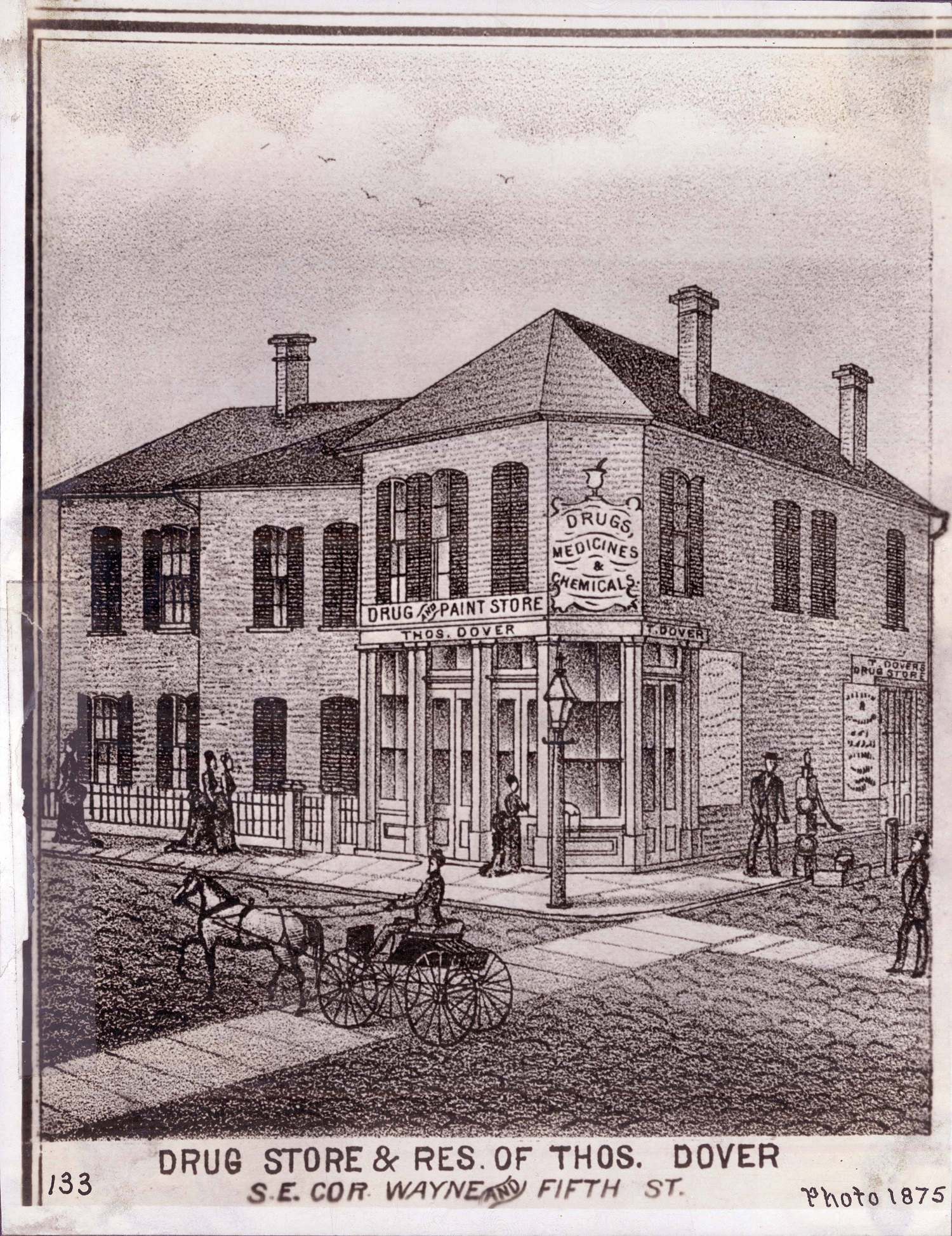
The business was already well established by 1875 when the building was depicted in the Combination Atlas Map of Montgomery County.
In 1883, it was replaced by a more ornate three-story brick commercial block constructed by Samuel B. Dover.
The impressive large corner building was called “one of the landmarks of this section of the city.”
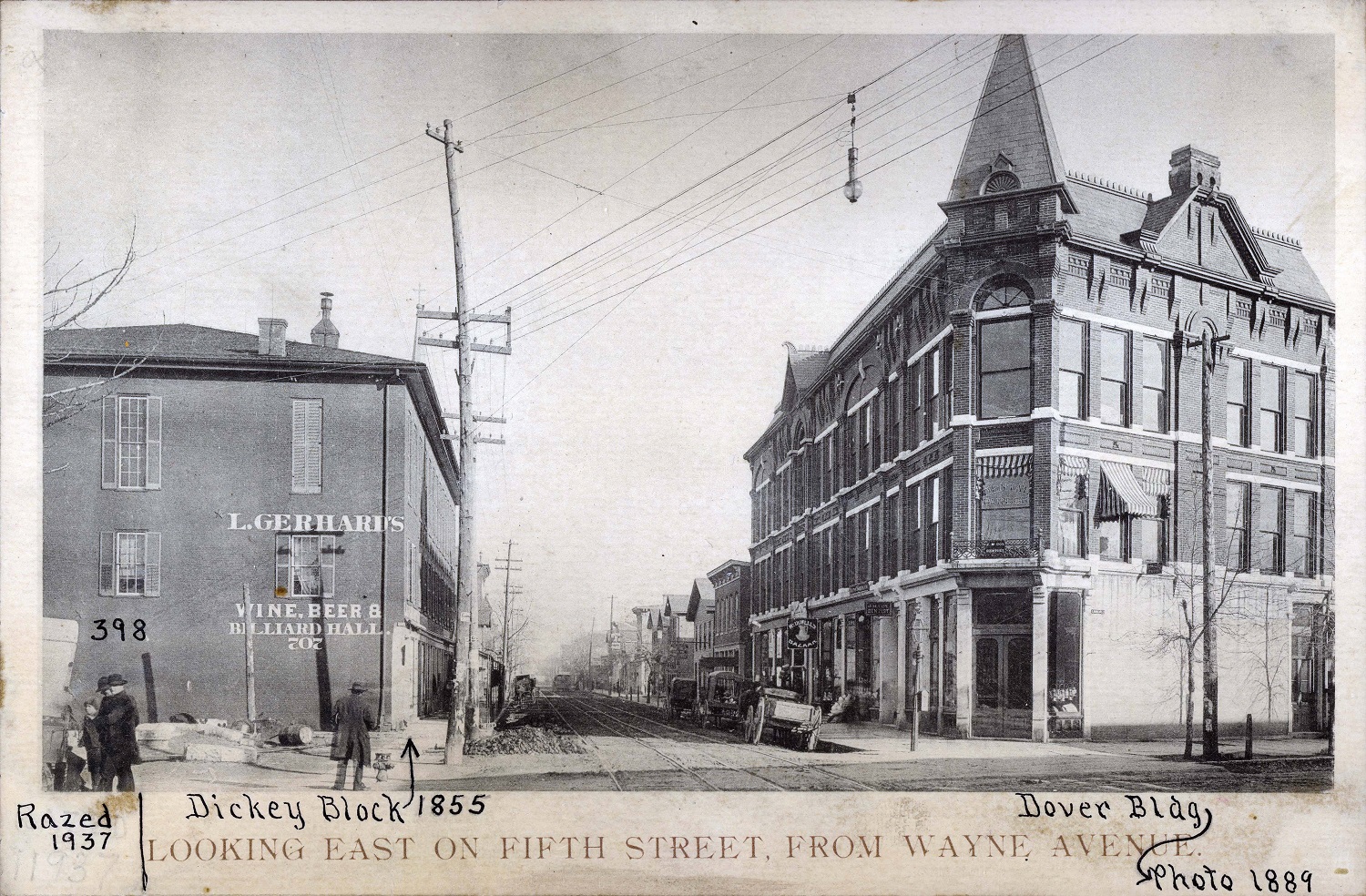
Controversy and tragedy plagued the larger building’s construction, however. Multiple articles described the “carelessness of the workmen” and that their placing a small board across the sidewalk “does not fence (the construction) in at all.”
One day during construction, “three little children passed it and were covered by a shower of dust and mortar.” But fortunately it did not contain any brick and the kids escaped dirty but uninjured. But on October 1883, a brick that fell from the third story of the Dover Block struck a Mrs. P. N. Adams in the head, killing her. Despite the tragedy, construction eventually was completed.
In the 1890s the drug store was taken over by the Jenkins Drug Company, whose operation continued until at least the 1940s, at which point the business was operated by Elizabeth Jenkins and Joseph Cowden.
Another tenant of the Dover Block was John Rea who dealt in household furniture, especially cradles and baby carriages.
In 1926 the building was sold from Samuel B. Dover to Isaac Kaplan, owner of the Pennsylvania Iron and Coal Company, for $92,000 (the sale price included the small adjoining properties). It was noted that the purchase was “for investment purposes” of Mr. Kaplan, who would “do such remodeling of the properties as to bring them strictly up to date.”
The area declined over the subsequent decades, was designated as “blighted” in order to open up the possibility of federal urban renewal funds, and was totally demolished in the early 1960s.
In 1965, a shell gas station was built on the site of the Dover block.
The urban renewal project widened the streets to accommodate cars at the expense of walkability, greatly decreased density and pedestrian flow, and abandoned the principles of human-scale design which had originally made this area a self-sufficient, livable neighborhood.
So not surprisingly, it continued to decline and by the 1990s the Shell station was abandoned and derelict.
In 1997, the site was purchased by a group of seven developers who opened the Dublin Pub on the same corner the following year, which is still going strong over two decades later.
In 2013, the restaurant began planning an addition that would incorporate a variety of historic materials. According to the Dublin Pub it was “constructed from nearly all reclaimed historic material from up to 20 separate historic structures including The Huffman School, The Stockyards, a few houses built in the 1850’s, and a downtown office building.” In addition, “a 108 year old church was salvaged from demolition, and stored for 1.5 years until the church could be rebuilt as the new addition.”
With all the historic architecture has been lost near this corner, the new addition is a welcome development.

Sources
Historic images courtesy of Dayton Metro Library
Dover Block Sells in Deal of $92,000. Dayton Daily News. 4/12/1926.
It Happened in Dayton. Dayton Herald. 3/19/1942.
Dayton Herald, p. 3. 11/1/1883.
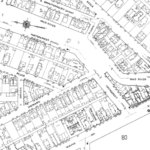

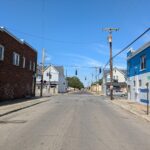
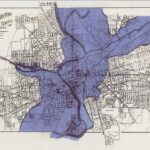
Leave a Reply